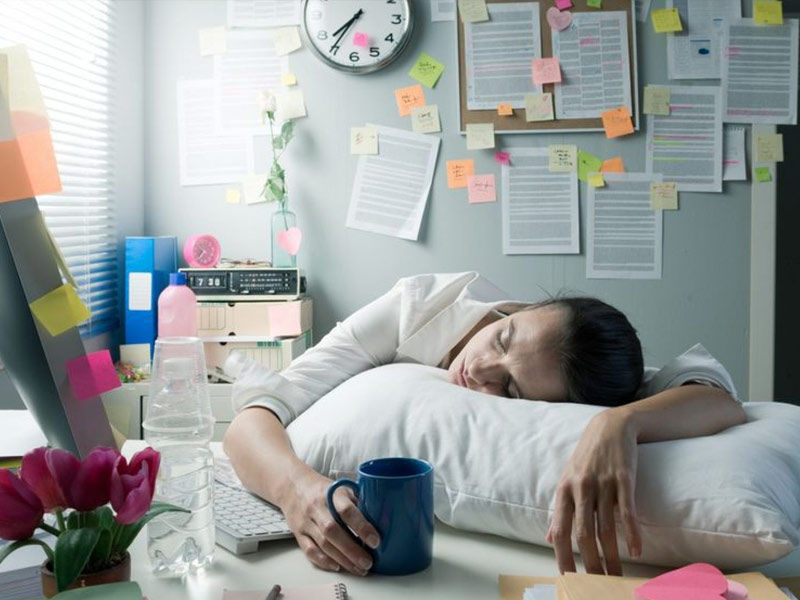Power Naps are the best way to increase your work efficiency. Gargling down coffee won’t always be a healthy option for your body.
In China, snoozing at one’s work is a fundamental privilege. In Japan, inemuri (literally, “sleeping while present”) is a sign of hard labor. On the other hand, power naps have a big image problem in the United Kingdom, the United States, Australia, and many other Western countries, where capitalist rat races are powered by flat whites and billable hours. They’re associated with laziness and lethargy, with those who don’t want to get out of bed.
A Power Nap is a brief period of sleep that occurs throughout the day. Many people swear by naps as a great way to unwind and rejuvenate. In contrast, others find them to be ineffective and disturbing to their sleep. Not all naps are made equal, and a variety of factors influence how effective naps are. It’s vital to know how to take a proper power nap if you want to reap the benefits of a power nap.
Our active (sympathetic) and recuperative (parasympathetic) nerve systems are rebalanced when we sleep. Sleep stimulates the recuperation mechanism, which provides us with the energy we need to remain active. So naturally, a power nap can also be linked to improving immunity and generating a good mood.
How to take a good Power nap?

If you nap between 1 and 3 p.m., but no later than 4 p.m., you risk disrupting your nighttime sleep and your overall body clock. It is also advised that if you’re having trouble sleeping at night, power naps aren’t exactly good for your health and sleeping patterns. To get the best out of a power nap, don’t worry about falling asleep and relax your mind.
It’s better to sit somewhat erect or sleep on top of the covers for shorter naps than to dive beneath the blanket, which will put you in a deeper state and cause grogginess or, in layman’s terms, a ‘sleep hangover.’ Set the alarm unless you’re feeling daring and want to take what’s known as a “danger” nap.
Here are a few tips that will help you take better and more efficient power naps-
Take early Naps
Later-in-the-day naps might interfere with your ability to fall asleep at night. As a result, sleeping about midway between when you get up and when you want to go to bed is a good idea.
Relax your Mind
Because dwelling on stress causes can keep you awake, it is important to relieve tension and calm your thoughts to get a pleasurable power nap. If you’re having problems letting go of worries and to-do lists, try relaxing with YouTube thunderstorm movies (thunderstorm acoustics are known to be calming to some people and are personally my favorite), aromatherapy (I recommend cocoa butter scented candles), sleep meditation, and so on. These can assist you in falling asleep and waking up revitalized and rejuvenated.
Also Read, 6 Habits That Might Be Affecting Your Sleep
Make sure your surroundings are ‘sleep-friendly.’
Your environment should be conducive to napping for you to fall asleep. You may or may not have a comfy mattress accessible depending on where you are, but napping in a dark, cool, and quiet environment is beneficial. However, for power naps, it’s better to invest in an arm pillow (available at retailers like Miniso) or find a comfy chair or office sofa to power nap in.
Be sure to set an Alarm.
According to studies, the optimal nap length for most people is between 10 and 20 minutes. This allows for a restful sleep without sleepiness when you wake up. Limiting the amount of time you spend sleeping might help you feel more awake and productive following your nap.

Power nap Benefits
The precise word for the sense of pressure to sleep is homeostatic sleep drive. It’s the feeling of hunger we get the longer it’s been since our previous meal. Your homeostatic sleep drive is low when you get up after a good night’s sleep. The pressure gradually rises during the day until we feel drowsy in the evening. Sleeping at night lowers sleep pressure, and the cycle repeats the following day. Napping throughout the day reduces homeostatic sleep drive, making us feel more alert and working better.
Get a solid night’s sleep before a lengthy journey. Naps are also important for drivers. Driving while sleepy puts you, your passengers, and everyone on the road at risk. Each year, drowsy drivers cause hundreds of thousands of automobile accidents throughout the world. To combat this, officials advise getting sufficient sleep of at least 7-8 hours on a nightly basis. They recommend drinking coffee and pulling over safely for a 20-minute snooze if you start to feel tired while driving. This is not a good answer, though, as napping and caffeine are known to enhance alertness for only a short period.
Ultimately, power naps can help you feel more energized, have better focus, pay attention, and think more clearly. Still, the optimal duration is about ten minutes. According to some studies, this is a reliable source. On the other hand, naps should not be utilized as a substitute for receiving the necessary amount of sleep each night, which for individuals aged 18 to 60 is preferably 7–9 hours. When limited to 10–20 minutes per day, power naps may be an excellent complement to a healthy lifestyle and provide several benefits to people who use them.
So, whenever you’re feeling depleted and fatigued, why not try having a power nap?

























